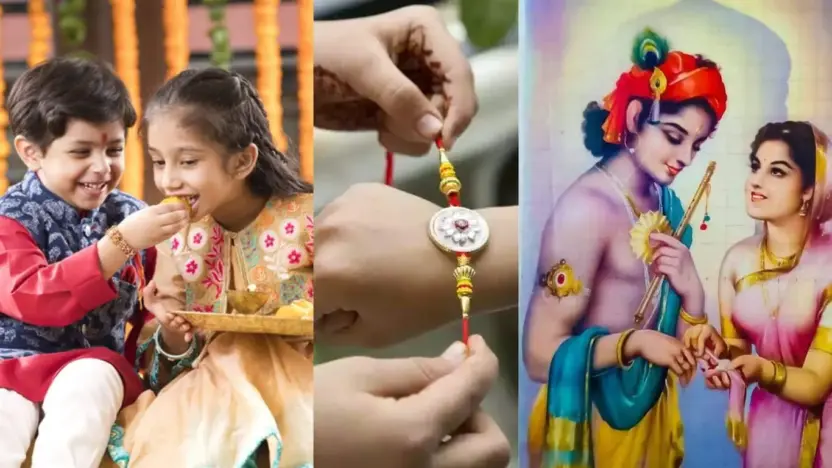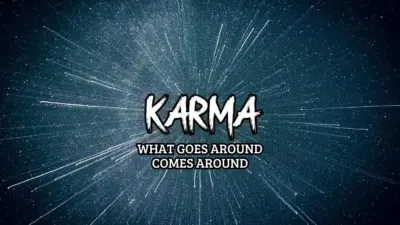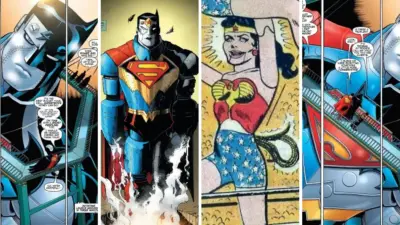Raksha Bandhan, a festival deeply woven into the cultural tapestry of India, epitomizes the enduring bond between brothers and sisters. Literally translating to ‘the bond of protection,’ it is a day set aside each year for siblings to celebrate their unique and cherished relationship. But this festival is more than just tying a decorated thread around a brother’s wrist. Its roots plunge deep into the ancient history, mythology, and traditions of India, carrying a significance that transcends the ages. Far from being just another customary ritual, Raksha Bandhan is a celebration of love, trust, and the immeasurable emotional security siblings offer each other. This article explores the intriguing origins, rich history, and the profound cultural importance of this festival, unveiling the layers that make Raksha Bandhan a beloved occasion for millions worldwide.
Raksha Bandhan: History, Origin and Significance
History and Origin of Raksha Bandhan
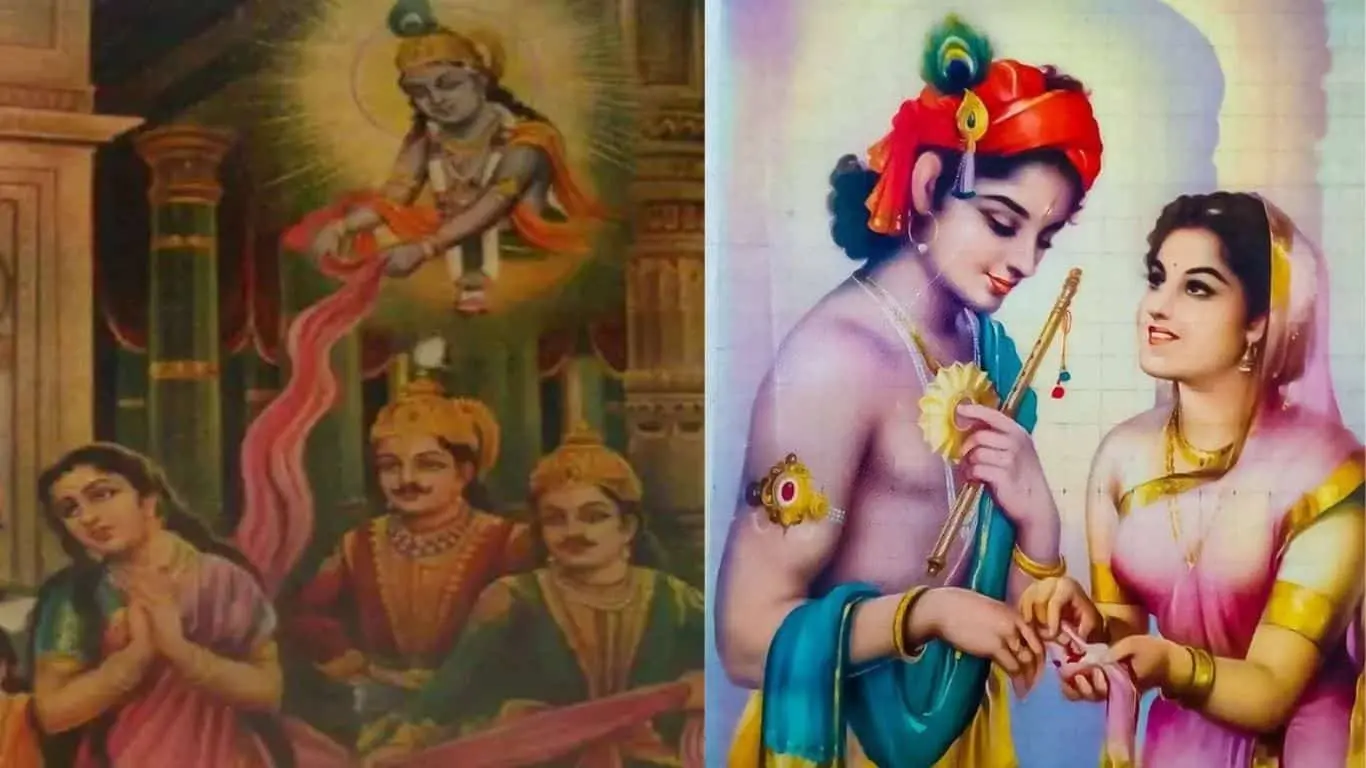
Ancient Origins
One of the earliest mentions of a Rakhi-like ritual can be traced to the Vedic period, where a thread was used to symbolize a bond between two individuals. In some traditions, it is believed that the practice might have started with the gods tying protective threads around each other during times of war.
Mythological Significance
Various legends in Hindu mythology talk about the festival of Raksha Bandhan. One such story is from the Mahabharata, where Draupadi, the queen of the Pandavas, ties a piece of her sari around Krishna’s wrist to stop bleeding from a battlefield wound. Krishna then promises to protect her, and the tale is often cited as an example of the sibling-like bond between non-siblings.
Another popular myth involves the demon king Bali and the goddess Lakshmi. According to the story, Lakshmi ties a Rakhi around Bali’s wrist to make him her brother and thereby secures her husband Lord Vishnu’s place in Bali’s palace.
Historical Context
Raksha Bandhan also has significant historical references. One such story is of Rani Karnavati of Chittor sending a Rakhi to Mughal Emperor Humayun when she sought his help during a siege. Touched by the gesture, Humayun rushed to her aid.
Cultural Adaptations Over Time
Originally, the festival may not have been confined only to biological brothers and sisters. It was a broader social and moral construct, where the tying of a thread marked a bond of protection and care, extended to even soldiers and kings. Over time, the festival became more family-centric and began to represent the love between siblings.
The festival has evolved to include more than just the tying of a thread. It is a day for family reunions, elaborate meals, and gift exchanges. It also varies in its celebration across different Indian states, each adding its own regional touch to the festival.
Significance of Raksha Bandhan
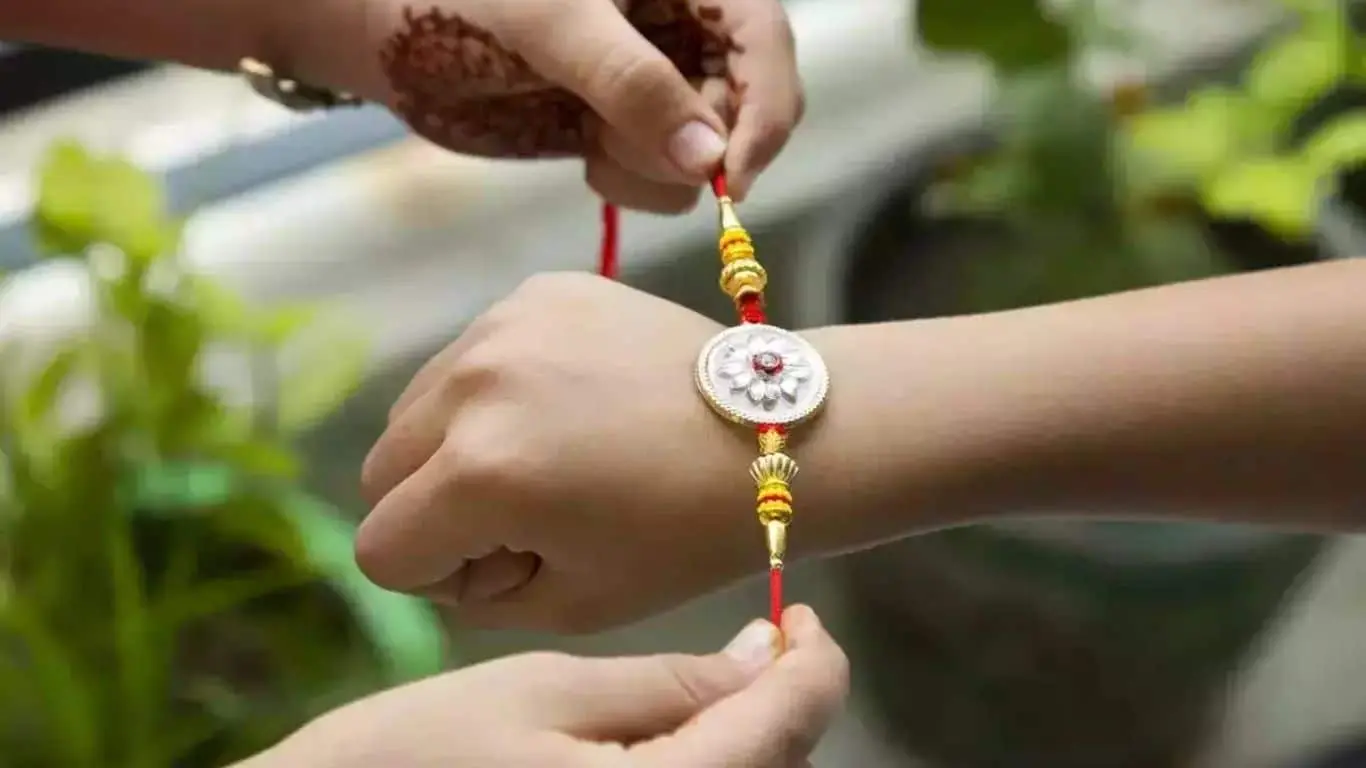
The significance of Raksha Bandhan transcends the simple act of tying a thread around a brother’s wrist; it’s a profound celebration of one of the most unconditional and pure relationships— that between siblings. This festival serves multiple roles in terms of its cultural, social, and even psychological significance.
Symbol of Unconditional Love and Trust
At its core, Raksha Bandhan is a physical manifestation of emotional security and mutual respect between a brother and sister. The Rakhi—the thread tied by the sister—acts as a symbol of her affection and the brother’s promise to protect her from life’s adversities.
Cultural Importance
In a country like India, which is incredibly diverse in its traditions and practices, Raksha Bandhan serves as a unifier. Celebrated across the length and breadth of the country, albeit with regional variations, the festival has the power to bring families and communities together.
Social and Moral Fabric
Beyond the familial sphere, Raksha Bandhan has served broader societal functions. In history, the Rakhi was not confined to sibling relationships but extended to form alliances and call for protection or favor in political and social scenarios. This broader social element adds depth to the festival, making it more than just a family occasion.
Religious Overtones
While primarily a Hindu festival, Raksha Bandhan has a universal appeal and is celebrated by people of different religions and ethnicities within India and beyond. The values of love, protection, and respect that the festival embodies are universal, making it a celebration that transcends religious boundaries.
Evolution of Raksha Bandhan
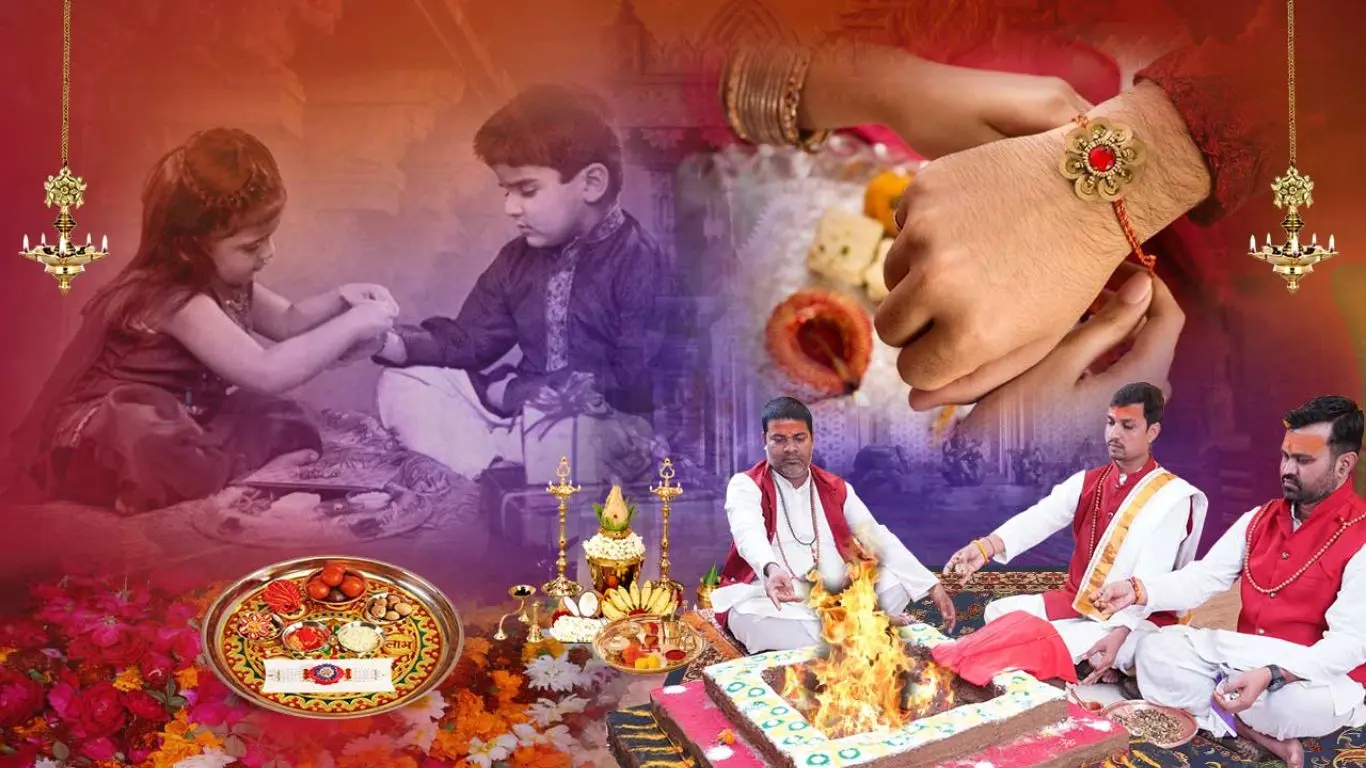
The festival of Raksha Bandhan has a long and storied history, the nuances of which are captured through a variety of sources—be it dictionaries, historical texts, or cultural references. Its evolution in India can be understood through a chronological journey across these markers.
Linguistic Roots
The Oxford English Dictionary traces the Hindi word “Rākhī” to the Sanskrit “Rakṣikā,” signifying protection or amulet. This directly correlates with the festival’s essence, which revolves around the idea of protection and emotional safety.
Early English References
The festival was first mentioned in English in 1829 by James Tod, describing how a Rajput woman bestows the title of an “adopted brother” by tying a Rakhi. Interestingly, this account acknowledges the aspect of social alliances in the festival.
Mid-19th Century
By 1857, Forbes’ Dictionary of Hindustani and English defined “Saluno” as the full moon in Sawan, linking it with the act of tying a Rakhi. This shows the festival was recognized and recorded by foreign scholars, reinforcing its cultural significance.
Late 19th to Early 20th Century
In dictionaries and texts such as Platts’ and Monier-Williams’, the Rakhi was elaborated upon as an amulet or a symbol of mutual dependence. Here, the Rakhi evolves from just an item of protection to a symbol of mutual respect and dependence.
Mid-20th Century
By the mid-20th century, the Rakhi ceremony was discussed in texts like the Hindi Sabd Sagara as an occasion where Brahmins or other individuals would tie a thread around the wrists of their patrons or close friends. This suggests a broader, perhaps more ritualistic application of the Rakhi, beyond sibling relationships.
Late 20th Century
Jack Goody, in 1990, defined the Rakhi as a multi-faceted symbol: “a defense against misfortune, a symbol of dependence, and a mark of respect.” Here, the Rakhi has matured into a complex symbol carrying multiple layers of meaning.
Early 21st Century
Dictionaries from the early 2000s, such as the Oxford Hindi–English Dictionary and the Oxford Urdu–English Dictionary, highlight the festival as one where sisters tie a talisman on the arms of their brothers and receive gifts. Here, the modern practice of gift exchange is acknowledged.
How is Raksha Bandhan Celebrated Today
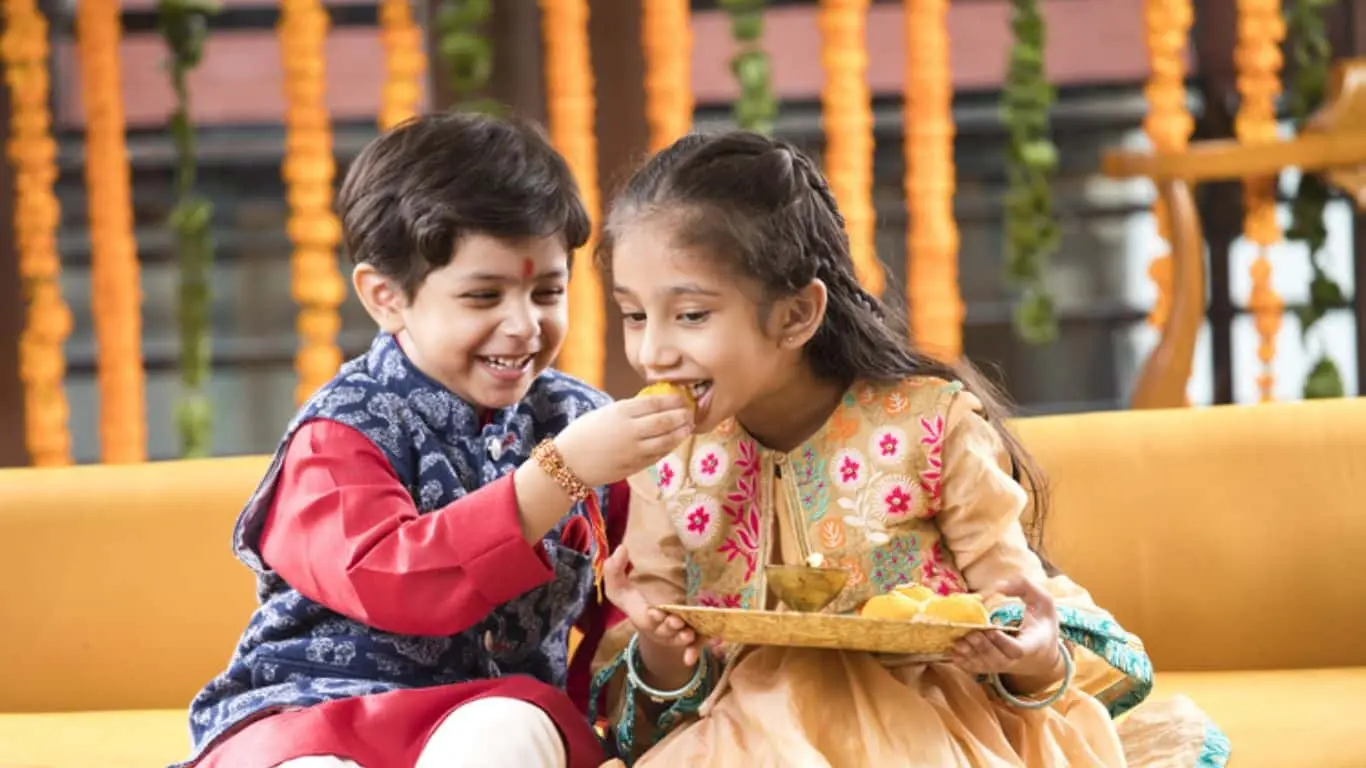
Today, Raksha Bandhan is celebrated with great enthusiasm not just in India but across the world wherever there is a significant Indian diaspora. While the core traditions remain the same, modern touches and interpretations have enriched the festival’s celebration.
The Preparations
The preparations for Raksha Bandhan begin well in advance. Sisters shop for the most beautiful and intricate ‘rakhis’ (the sacred threads), and families buy gifts, sweets, and other essentials for the ceremony. Many people also buy new clothes and accessories for the special day.
The Ceremony
On the day of Raksha Bandhan, sisters and brothers dress in their finest clothes and gather with their families. A ritual aarti is performed, and sisters apply a tilak or mark on their brothers’ foreheads. Then, the sisters tie the rakhi around their brothers’ wrists. In return, brothers give gifts or money and promise to protect their sisters.
Post the rakhi-tying ceremony, families usually pray together and seek blessings from the elders. The occasion often coincides with shared meals, sweets, and a general atmosphere of merriment.
Modern Adaptations
While the essence of Raksha Bandhan remains the same, modern adaptations are aplenty. For siblings who cannot meet in person, virtual Rakhi ceremonies have become common. E-commerce platforms have made it easy to send a rakhi or a gift anywhere in the world, bridging the gap created by physical distance.
Expanded Scope
Today, Raksha Bandhan is not just confined to biological siblings. Friends, cousins, and sometimes even colleagues celebrate it to honor their special bonds. In some instances, women tie rakhis around the wrists of soldiers, politicians, or social workers as a symbol of respect and to wish them well in their endeavours to protect society.
In recent years, there’s been a conscious move towards making Raksha Bandhan more gender-neutral. Some sisters are flipping the tradition and taking vows to protect their brothers, recognizing that vulnerability and the need for support are not gender-specific.
Similar Festivals Around the World
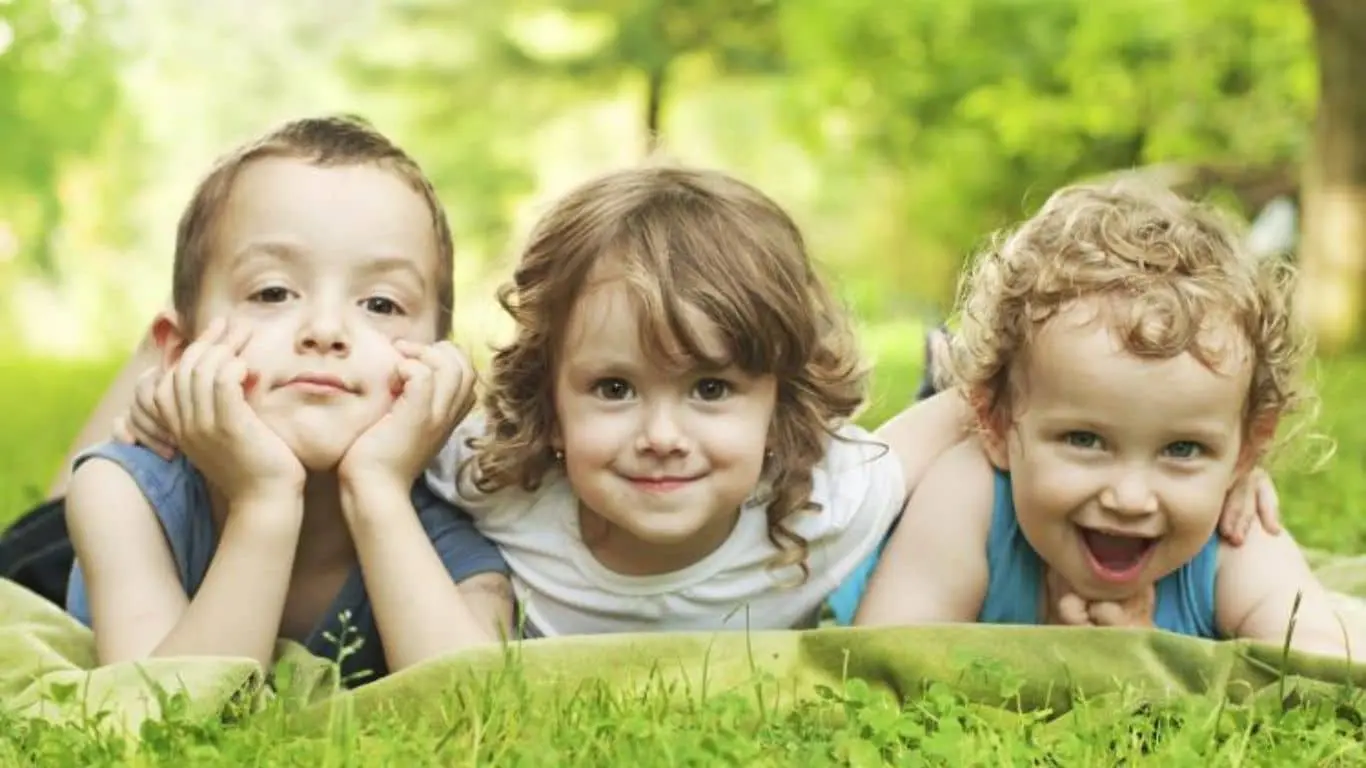
While Raksha Bandhan is unique to South Asian culture, the universal themes of love, protection, and familial bonds that it celebrates are not confined to just one part of the world. Various cultures and communities have their own versions of festivals that honor these values. Here are some similar festivals celebrated around the world:
Siblings Day – United States
National Siblings Day is observed on April 10th in the United States. While not a public holiday, the day is dedicated to honoring the bonds between siblings. Gift-giving and social gatherings are common ways to celebrate the occasion.
Dia del Hermano – Argentina
In Argentina, Siblings Day or “Dia del Hermano” is celebrated on September 4th. Just like Raksha Bandhan, this day is an opportunity for siblings to express their love and appreciation for one another, often through the exchange of gifts and spending time together.
Bhai Dooj – India and Nepal
Another festival similar to Raksha Bandhan but celebrated during the Hindu festival of Diwali. Sisters put a tilak on their brothers’ foreheads and pray for their well-being, and in return, brothers give gifts to their sisters.
Brother and Sister Day – Portugal
In Portugal, Dia do Irmão is celebrated on March 31st. The day is dedicated to honoring sibling relationships, and like Raksha Bandhan, it often involves the giving of gifts and spending quality time together.
While each of these festivals has its own unique customs and cultural context, they all celebrate the enduring bonds of family and kinship, much like Raksha Bandhan.
Also Read: 9 Different Forms of Lord Shiva
